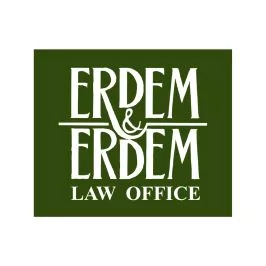Introduction
Time and cost efficiency continues to be the Achilles' heel in international arbitration proceedings. Although the parties of a dispute choose to arbitrate in order to avoid everlasting hearings before national courts, they often face excessive amounts of arbitration costs1. Some practitioners and scholars argue that this stems from the common law approach adopted in the IBA Rules on the Taking of Evidence in International Arbitration2 ("IBA Rules"), which is not suitable for every dispute, while others decline this reasoning3. In light of these ongoing discussion, as an alternative to the IBA Rules4, a draft of the Inquisitorial Rules on the Taking of Evidence in International Arbitration5 ("Prague Rules") has been released which will be launched by the end of 2018.
The Main Features of the Prague Rules
As per the Prague Rules working group6's preamble to the draft, the rules aim to increase efficiency in international arbitration by overcoming the obstacles claimed to be stemming from the common law approach in document production, cross-examination of witnesses, expert opinions and etc.
What is most notable is that, the working group as the drafters of the Prague Rules brings forward an inquisitorial model of procedure in which the arbitral tribunals are expected to be more pro-active.
The Civil Law Approach
The foremost mindset of the Prague Rules is the application of civil law approach that brings more inquisitorial and investigative powers to the arbitral tribunal7 since the IBA Rules are criticized to be more adversarial, especially by the working group8; whereas, with the adversarial and confrontational approach stemming from the common law culture, the parties' autonomy is stronger in the conduct of the proceedings.
In this manner, the Prague Rules explicitly regulate the pro-active role of the tribunal under Article 2 and brings broader power to the tribunal in terms of case conduct. The same article obliges the tribunal to advise the parties and steer them to the evidence what it considers to be appropriate to prove their claims. In other words, the Prague Rules encourage pro-activity by the tribunals instead of party-dependency.
Accordingly, as per fact finding, the Prague Rules encourage the tribunal to take an active role to establish the facts of the case, where it may request the parties to produce relevant documentary evidence, make factual witnesses available for testimony, appoint experts, and take any other action it deems appropriate9.
Jura Novit Curia10
The Prague Rules provide a noteworthy regulation under Article 7 enabling the tribunal to apply legal provisions not pleaded by the parties, by seeking their consultative views. The same applies in cases wherein public policy issues shall be dealt. Since the IBA Rules does not contain a parallel provision, this regulation is noteworthy.
It shall be noted that there are diverging approaches in the national courts in relation to this issue where, in some cases, the decisions given by the tribunals applying legal provision not alleged by the parties may be annulled11.
Assistance in Amicable Settlement
Another noteworthy divergence of the Prague Rules from the IBA Rules is that it explicitly encourages amicable settlement of dispute under Article 9. This is another step taken closer to the civil law approach where arbitrators have more of a tendency to offer settlement discussions. In this manner, upon consent of the parties, the tribunal may assist in an amicable settlement, and may even act as mediator.
Conclusion
As international arbitration emerges to be the premier dispute resolution mechanism12, scholars and the practitioners continue their work to overcome the time and cost-inefficiencies in proceedings. The Prague Rules drafted as an alternative to the IBA Rules targets bringing civil law nuances to the soft law covering the rules on the taking of evidence, although they are criticized by some to be not so diverging from what the IBA Rules brought forward. Once the detailed provisions and long-lasting application of the IBA Rules is taken into consideration, only time will show the success chance of the Prague Rules in the upcoming years.
Footnotes
1 Klaus Peter Berger, J. Ole Jensen, "Due Process Paranoia and the Procedural Judgment Rule: A Safe Harbour For Procedural Management Decisions By International Arbitrators", Arbitration International, Volume 32, Issue 3, 1 September 2016, Pages 415–435, https://doi.org/10.1093/arbint/aiw020.
2 IBA Rules on the Taking of Evidence in
International Arbitration:
https://www.google.com.tr/search?q=IBA+Rules+on+the+Taking+of+Evidence+in+International+Arbitration&rlz=1C1RUCY_tr
TR710TR710&oq=IBA+Rules+on+the+Taking+of+Evidence+in+International+Arbitration&aqs=chrome..69i57
j69i60l2j0l3.650j0j7&sourceid=chrome&ie=UTF-8
3 Guilherme Rizzo Amaral, 'Prague Rules v. IBA Rules and the Taking of Evidence in International Arbitration: Tilting at Windmills – Part I', Kluwer Arbitration Blog, July 5 2018, http://arbitrationblog.kluwerarbitration.com/2018/07/05/prague-rules-v-iba-rules-taking-evidence-inter national-arbitration-tilting-windmills-part/; Guilherme Rizzo Amaral, 'Prague Rules v. IBA Rules and the Taking of Evidence in International Arbitration: Tilting at Windmills – Part II', Kluwer Arbitration Blog, July 6 2018, http://arbitrationblog.kluwerarbitration.com/2018/07/06/prague-rules-v-iba-rules-taking-evidence-international-arbitration-tilting-windmills-part-ii/.
4 For detailed information as per the IBA Rules please see: Ezgi Babur, "Document Production Requests Pursuant to IBA Rules on the Taking of Evidence in International Arbitration–I", January 2016, for hyperlink: http://www.erdem-erdem.av.tr/publications/law-post/document-production-requests-pursuant-to-iba-rules-on-the-taking-of-evidence-in-international-arbitration--i/ and Document Production Requests Pursuant to IBA Rules on the Taking of Evidence in International Arbitration–II", May 2016, for hyperlink: http://www.erdem-erdem.av.tr/publications/law-post/document-production-requests-pursuant-to-iba-rules-on-the-taking-of-evidence-in-international-arbitration--ii/.
5 The Inquisitorial Rules on the Taking of Evidence in International Arbitration: http://praguerules.com/prague_rules/.
6 For the list of the working group: http://praguerules.com/working_group/.
7 Duarte G. Henriques "The Prague Rules: Competitor, Alternative or Addition to the IBA Rules on the Taking of Evidence in International Arbitration?", ASA Bull. 2/2018, p. 354.
8 The Prague Rules p.2.
9 The Prague Rules Article 3.
10 The principle of jura novit curia means that the judge or arbitrator may apply provisions of the lex causae beyond the parties' submissions. For detailed information please see: Cenk Akil, "Hakimin Hukuku Kendiliğinden Uygulaması İlkesi (The principle of iura novit curia)", AÜHFD, 2008, http://dergiler.ankara.edu.tr/dergiler/38/1498/16511.pdf.
11 Duarte G. Henriques "The Prague Rules: Competitor, Alternative or Addition to the IBA Rules on the Taking of Evidence in International Arbitration?", ASA Bull. 2/2018, p. 359 to 360.
12 2013 International Arbitration Survey, p.6; 2006 International Arbitration Survey, p.5; https://www.whitecase.com/sites/whitecase/files/files/download/publications/qmul-international-arbitration-survey-2015_0.pdf
The content of this article is intended to provide a general guide to the subject matter. Specialist advice should be sought about your specific circumstances.

